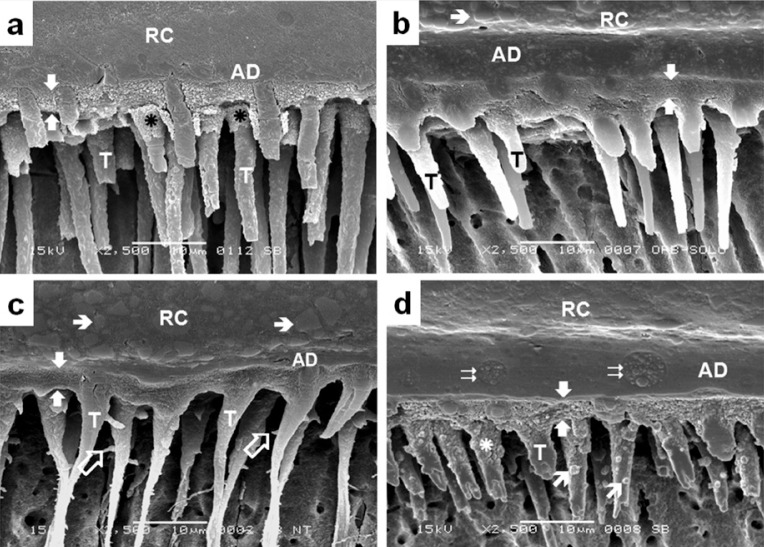Figure 3.
Representative SEM secondary electron image showing the micro-morphologic aspect of the bonding region produced by the adhesive systems Adper Single Bond (a), OptiBond Solo Plus (b), Prime & Bond NT (c) and Adper Single Bond 2 (d) with dentin. All of them formed authentic hybrid layers with 4-5μm-thick (between white arrows) and resin tags (T) distributed along the interface. The hybridization process extended down to tubular walls, providing a morphologic aspect similar to the hybrid layer at the initial portion of some resin tags (asterisk). Lateral branches, which correspond to the secondary tubules, could be seen in some resin tags composed with Prime & Bond NT (
 ). The hybrid layer formed by Adper Single Bond 2 showed an atypical granular aspect, and round grains (
). The hybrid layer formed by Adper Single Bond 2 showed an atypical granular aspect, and round grains (
 ) could be observed in the medium third of some resin tags. Globular structures with 3–5μm-diameters, which were probably formed by the grouping of small “vesicles” of polyalkenoic acid (
) could be observed in the medium third of some resin tags. Globular structures with 3–5μm-diameters, which were probably formed by the grouping of small “vesicles” of polyalkenoic acid (
 ), can be observed in the adhesive layer (AD) of SB2. Microfillers (➝) of the resin composite (RC) could be identified in some sections.
), can be observed in the adhesive layer (AD) of SB2. Microfillers (➝) of the resin composite (RC) could be identified in some sections.

